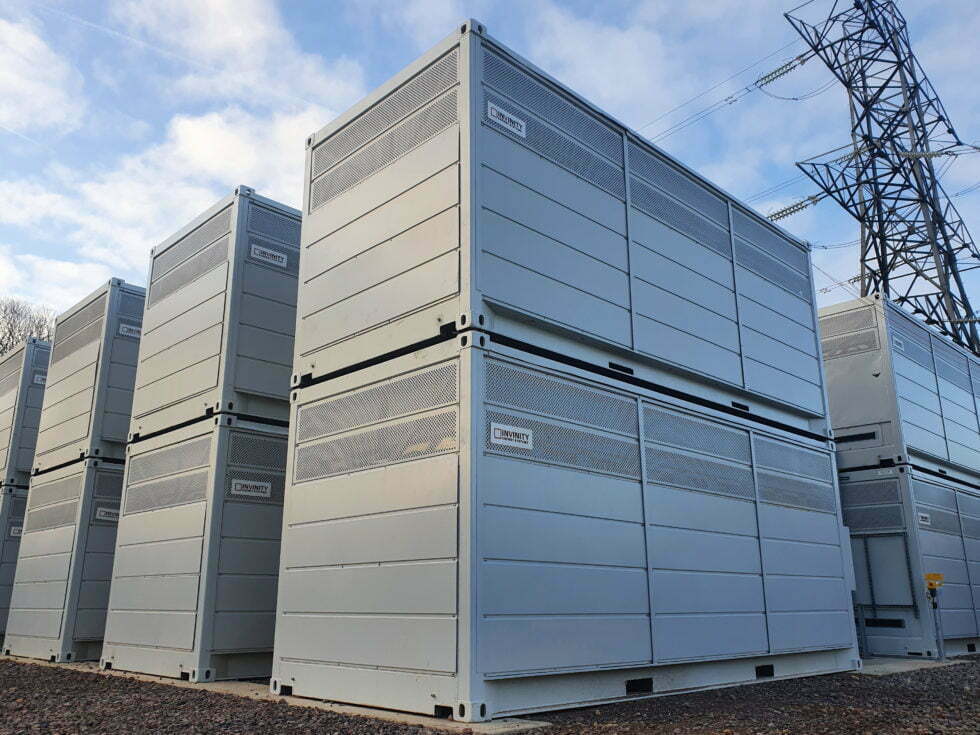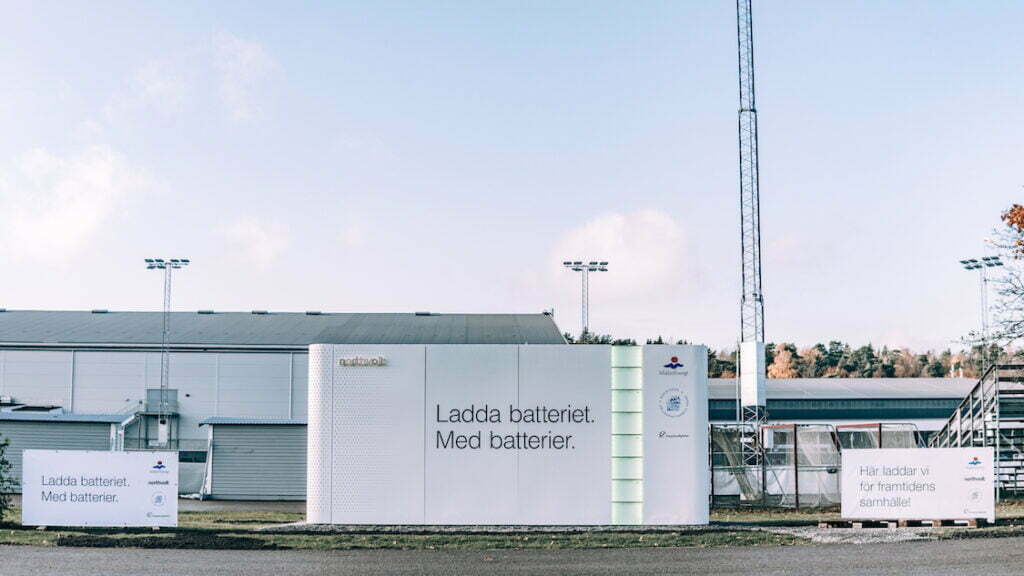Northvolt might be best known as a cell manufacturer for the automotive industry, but it’s also a producer of whole battery systems for two distinct market segments: Industrial and Grid. Image: Northvolt.
By now, everyone’s heard of Northvolt, the Sweden-headquartered startup founded by former Tesla exec Peter Carlsson, building 150GWh of lithium-ion battery factories in Europe.
But while investments and off-take deals from the automotive industry have rightly been a major focus of attention, its stationary energy storage division Northvolt Systems has a story to tell too.
By Emad Zand, president of Northvolt Systems.
This is an extract of an article which appeared in Vol.30 of PV Tech Power, Solar Media’s quarterly technical journal for the downstream solar industry. Every edition includes ‘Storage & Smart Power,’ a dedicated section contributed by the team at Energy-Storage.news.
At Northvolt Systems we’re working for a clean energy future by contributing to the establishing of a new industrial base for lithium-ion battery solutions in Europe.
Just as we’ve seen with developing a renewable energy industry, fostering a domestic battery energy storage industry not only represents a significant economic opportunity for Europe, but security of supply for a technology that is a linchpin in the transition towards clean energy.
Establishing this new industry isn’t straightforward and there are certainly challenges in developing the necessary components for a world-leading, sustainable supply chain, but we’re further along than people might think.
From our perspective, Europe holds all the right ingredients to become a global leader in battery energy storage solutions and it has every reason to embrace this opportunity.
The evolving European landscape for ESS
It’s fair to begin with acknowledging that while battery energy storage remains a young industry within Europe, it is one full of promise and potential.
The potential stems from the idea that Europe holds all the right competences to support a complete, globally competitive battery storage supply chain. By embracing the opportunities of this new industry and driving them to their full economic potential, Europe could very well become the leading global supplier of battery energy storage to a global market forecasted to attract some US$262 billion in investment out to 2030.
Many in the energy industry recall how 15 years ago Europe was tipped for leading the solar PV industry. But for reasons including lack of engagement from industry, as well as from governments and the EU to create favourable conditions, the opportunity was lost. It is precisely this which we must avoid with the battery industry.
To the promise, we need look no further than case studies of deployed energy storage systems (ESSs) for evidence of what the technology can do to quicken the adoption of clean energy and enable the transition away from fossil fuels. And indeed, there are even pioneering European ESS companies operating within this landscape – albeit with cells and batteries sourced from Asia, the long-standing home of the lithium-ion battery industry.
The relative immaturity of the ESS industry can be understood for two core reasons. First, since the region has historically lacked upstream cell production, it has not been in an ideal position to foster either battery competence or synergies in battery solutions.
Second, while theoretical need for energy storage has been recognised for some time, the realisable market demand has lagged behind. Clear market structures and reliable revenue streams for the operation of ESS are a prerequisite for business-case viable projects, but they also serve to encourage investment in components of industry itself, including components suppliers and developers.
To both points – the location of cell manufacturing and the viability of ESS – we see change that leaves Europe not only well-positioned and motivated to mature its ESS supply chain, but to lead it.
Europe is well underway in scaling up its cell production capacity: long-time champion of the European battery chain, European Commission Vice-President Maroš Šefčovič, has stated that by 2025 Europe will be the second largest producer of batteries in the world and supplying almost 90% of its domestic battery production needs.
In parallel, markets have become more favourable for energy storage deployments. To be sure, some markets are further ahead than others, certainly the UK and Germany can be highlighted in this respect; but broadly we have the right foundations which are strengthened by EU commitments to decarbonisation.
There are of course still challenges for the European supply chain, but above all there is opportunity. It is telling that in acknowledging the need for its own proactivity towards batteries, the US government has recognised the approach of Europe towards fostering a domestic battery supply chain.
The acknowledgement is well-earned. The EU has a proven track-record for nurturing its battery industry – focussing on cell manufacturing, upstream materials preparation and recycling.
Embedded within the EU’s approach is a particular focus on calls for sustainability within the battery industry. This is prudent – positioning the new industry to leverage what can become a differentiating factor for European products. On this front, new legislation currently under development in Brussels, namely the Battery Directive, is key.
Notable highlights include mandating of carbon footprint labelling, new procedures to ensure ethical sourcing of raw materials and ambitions for battery recycling. Stakeholders to the emerging European battery landscape should embrace sustainability from the outset.
BloombergNEF forecasts installations in the order of 1TWh of energy storage by 2030, with much allocated for Europe. Beyond the value of directly enabling these European deployments, the real opportunity is for Europe to become home to leading ESS developers supplying the global market, much as we see with wind power and energy efficiency technology.
With the right approach, in time what we could come to see in the European battery energy storage industry is a textbook example of the environmental, societal and economic gains to be secured in repositioning industrial might in manner aligned with demands of a world facing a climate emergency.
Northvolt’s first grid-connected battery system, Västerås, Sweden. Image: Northvolt
Build to cost, build to scale
For the European ESS industry to scale towards global leadership, it’s critical to design both manufacturing and product technologies to enable competitive pricing.
For this, one insight we’ve had is the importance of modularity. That is to say, designing a base module for integration into packs and systems that can easily be scaled with minimal additional design requirements or components.
The aim to design products for scalability extends to how we deliver new manufacturing capacity. Here too, we can be smart in how we establish factories. A balance must be found between CAPEX and OPEX. There is an unavoidable sizeable upfront cost to deliver assembly lines, but we can be smart in selecting machinery and tools, which when paired with well-designed products, is future-proofed for future battery systems products.
Especially on the mechanical and assembly sides, leveraging large-scale manufacturing techniques and methods – which Europe has considerable experience of from other sectors – is invariable rewarded with lower unit costs.
Reflecting what the European battery systems industry can and should become, we can highlight Northvolt Systems Dwa – the battery systems assembly facility under development in Gdansk, Poland. The facility will feature highly automated assembly lines for high-volume production of modules and module-to-pack integration. A port city with excellent road access to the continent, the facility is well-positioned for both inbound volumes of cells from Northvolt Ett and components and for outbound product flows.
Northvolt will invest US$200 million to build this new battery systems factory and it will become the largest of its kind in Europe. Development is already underway and production is scheduled to begin in 2022 with an initial annual capacity of 5GWh and a potential future capacity of 12GWh.
Batteries are rapidly becoming a cornerstone technology of energy, mobility and societal functioning at large. For Europe to transition effectively to net-zero, it requires battery systems of its own. But the opportunity is much greater. We missed our chance with solar PV, let’s not make the same mistake with batteries.
This is an extract of an article from Volume 30 of PV Tech Power, our quarterly journal. You can buy individual issues digitally or in print, as well as subscribe to get every volume as soon as it comes out. PV Tech Power subscriptions are also included in some packages for our new PV Tech Premium service.
About the Author
Emad Zand is the President of the Systems division at Northvolt. He joined the company in 2017 as partof the early team.
Prior to joining Northvolt, Emad was active as an angel investor and board professional after leaving his role as CEO of a medical device company, where he completed a successful turnaround and sale. Emad has a Master’s degree in Economics from Stockholm School of Economics and started his career at McKinsey & Co.
Continue reading










